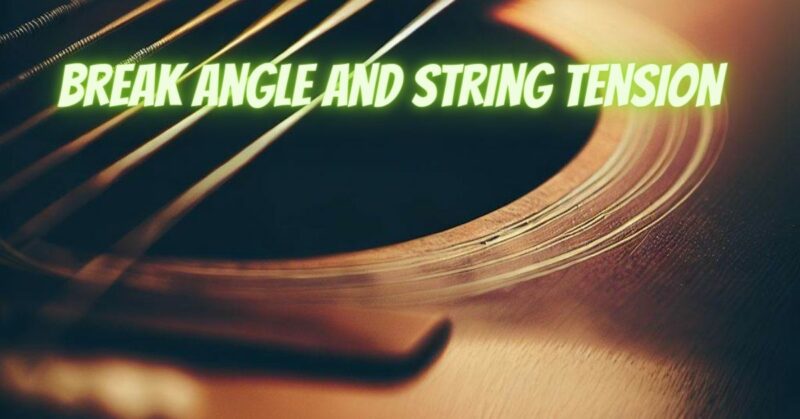Break angle and string tension are two closely related concepts in guitar playing. Break angle is the angle at which a string breaks over a saddle or nut, while string tension is the force that is pulling the string taut.
A steeper break angle will result in more string tension. This is because the string is being pulled against the saddle or nut at a sharper angle. The increased tension can have a number of effects on the sound of the guitar, including:
- Brighter sound: A steeper break angle can produce a brighter sound because it increases the tension on the string, which causes it to vibrate more rapidly. This produces more high-frequency overtones.
- More sustain: A steeper break angle can also increase the sustain of the guitar. This is because the increased tension allows the string to vibrate for longer.
- Better intonation: A steeper break angle can also help to improve the intonation of the guitar. Intonation is the accuracy of the guitar’s tuning. A steeper break angle helps to ensure that the guitar is in tune across the entire fretboard.
However, too much string tension can also have a negative impact on the guitar. It can make the strings difficult to bend and it can also cause the strings to break more easily. It is important to find a balance between break angle and string tension in order to achieve the best possible sound and playability.
The ideal break angle for string tension will vary depending on the type of guitar, the strings that are being used, and the player’s personal preferences. However, a good general rule of thumb is to have the strings break over the nut at an angle of at least 15 degrees.
Here are some additional things to keep in mind about break angle and string tension:
- The break angle is more important for the bass strings than the treble strings. This is because the bass strings are longer and thicker, and they therefore require more tension to stay in tune and produce a good sound.
- The break angle can also affect the tone of the guitar. A steeper break angle will produce a brighter sound, while a shallower break angle will produce a warmer sound.
- If you are using a locking nut, you will not need to worry about break angle. Locking nuts provide enough tension on the strings to keep them in tune without the need for a break angle.
Overall, break angle is an important factor in the string tension and tone of a guitar. By understanding how break angle affects these factors, you can find the ideal break angle for your guitar to achieve the desired sound and playability.


